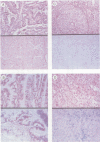Abstract
TNM (tumour, node, metastases) staging has thus far been the most important guide to prognosis in patients with gastric cancer. Histological grading, in contrast, has not provided any additional information. Recently a novel grading system based on tubular differentiation and mucus production has been proposed, which was correlated with patterns of tumour spread found at necropsy. This study set out to assess its value as a determinant of survival after gastric resection. In a consecutive series of 211 patients who had potentially curative resection for gastric cancer, five histological grading systems were assessed: the Lauren type, the WHO type, degree of differentiation, the type of tumour border, and the lymphocytic response to the tumour and compared with the Goseki grading (I-IV). When T and N stage were taken into account, using Cox's proportional hazards model, only the Goseki grading added further to the ability to predict survival. The proportional hazards ratios were: node negative v node positive 6.5 T1 v T3 2.45; Goseki I v Goseki IV 3.1. Five year survival of patients with mucus rich (Goseki II and IV) T3 tumours was significantly worse than that of patients with mucus poor (Goseki I and III) T3 tumours (18% v 53%, p < 0.003). Goseki grading identifies subgroups of patients with a poorer prognosis than is predicted by TNM staging alone. It could prove useful in the selection of patients for adjuvant therapy after potentially curative resection for gastric cancer.
Full text
PDF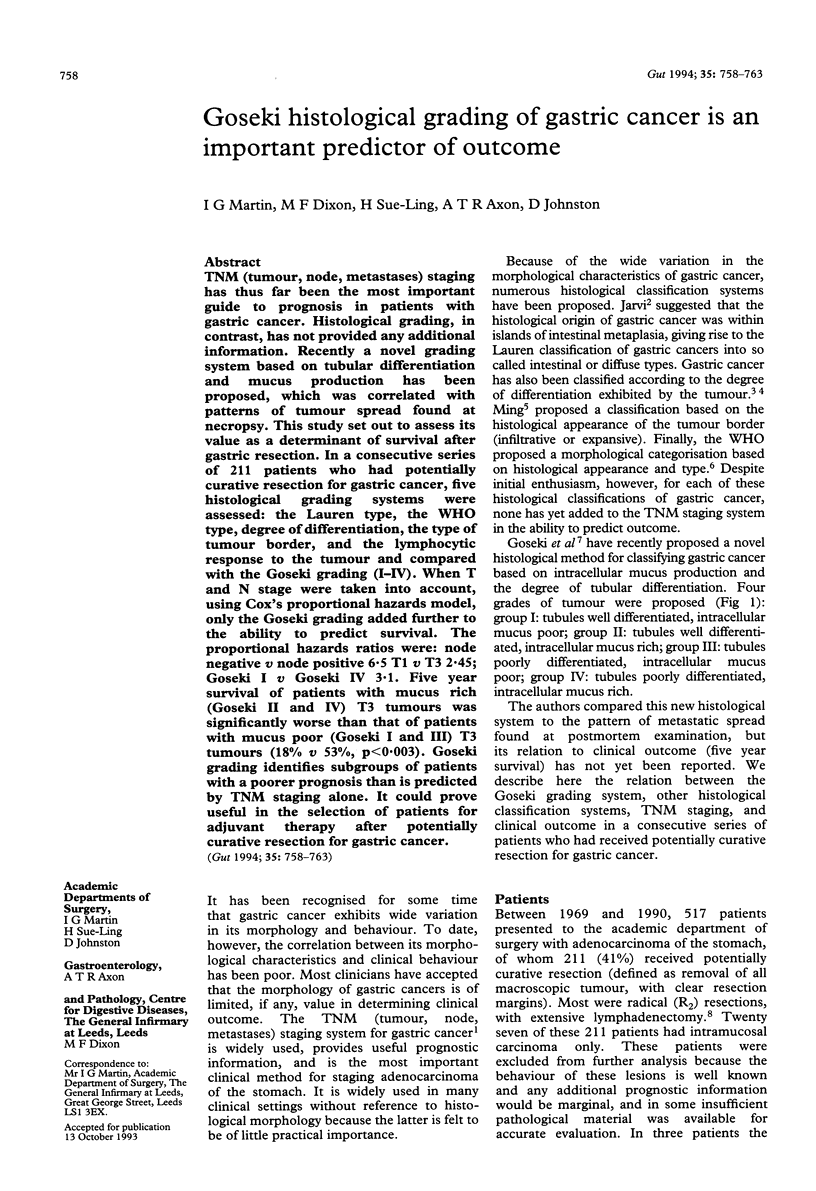
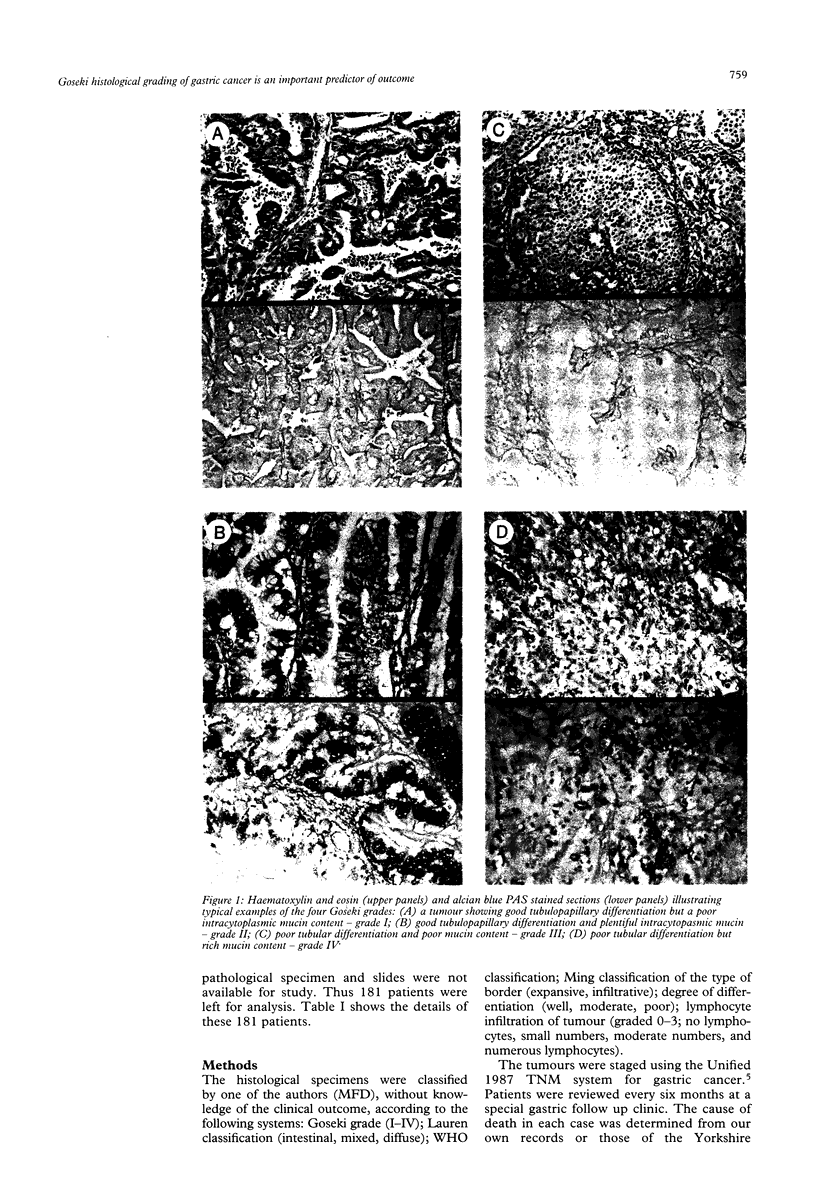
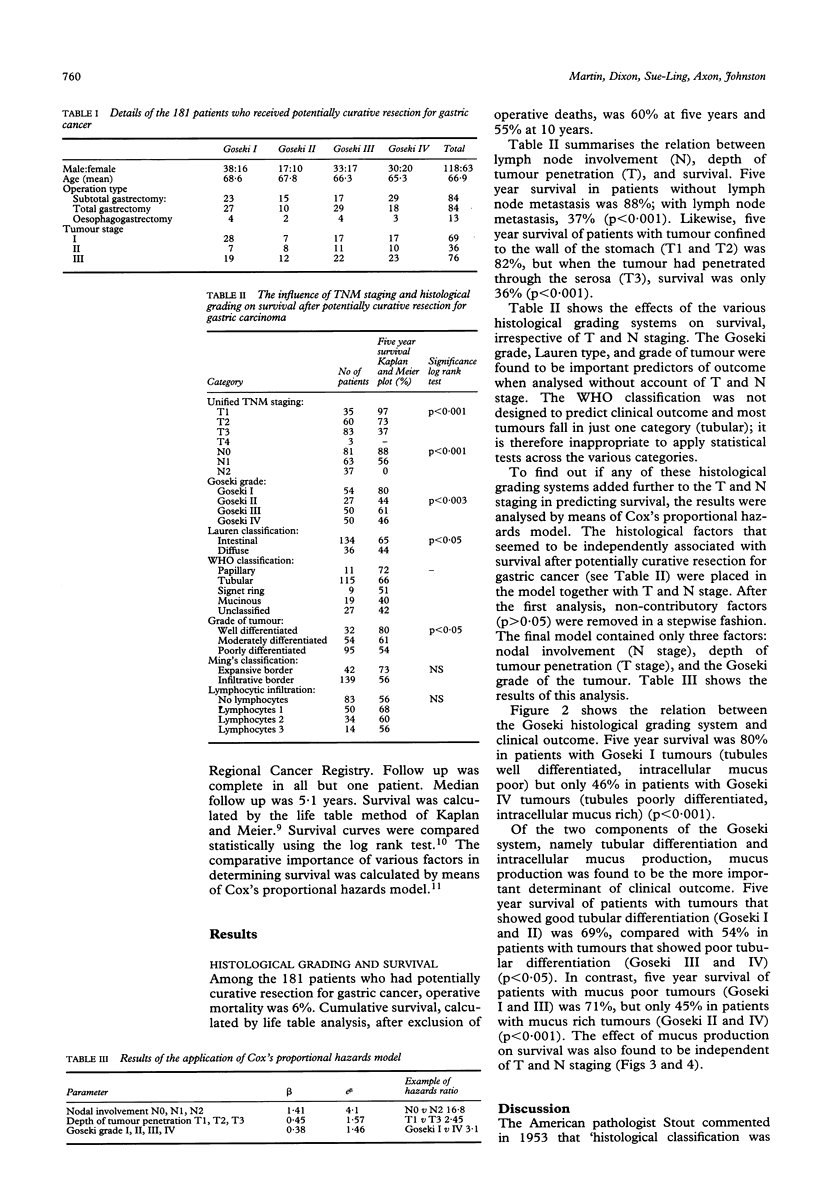
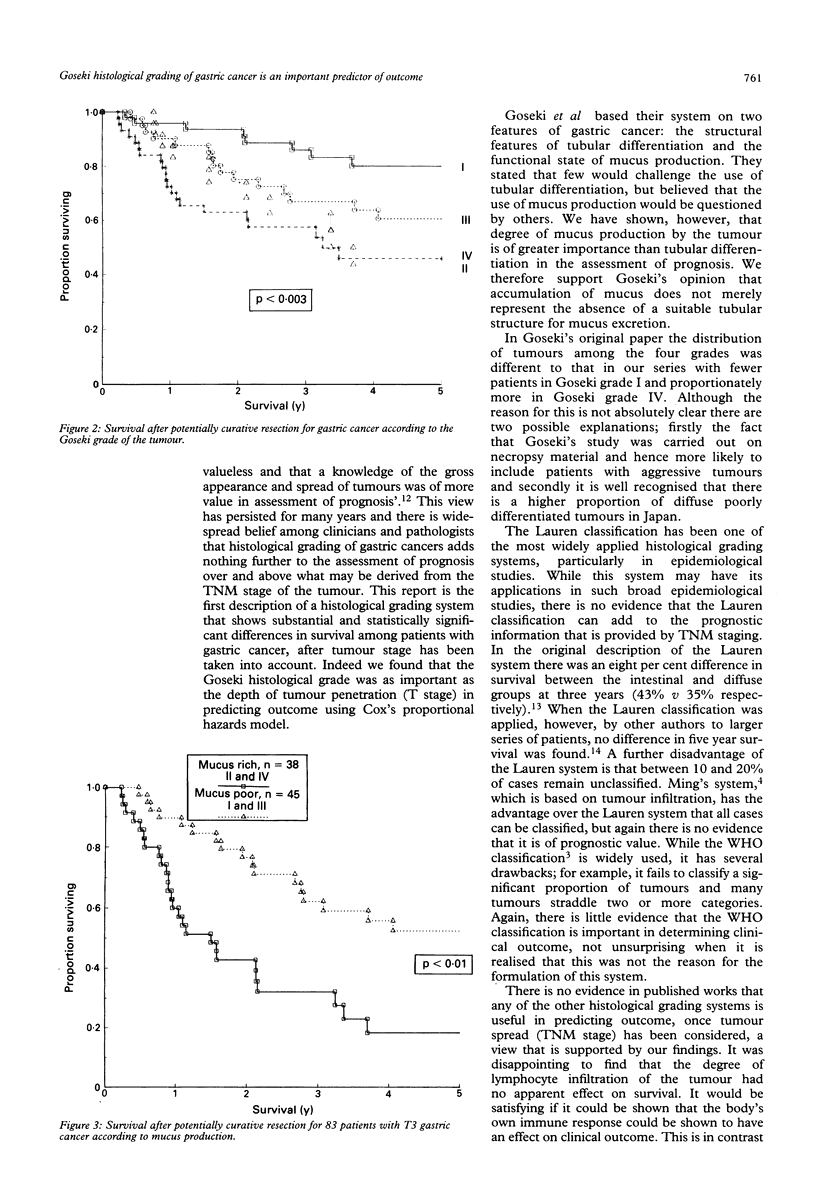
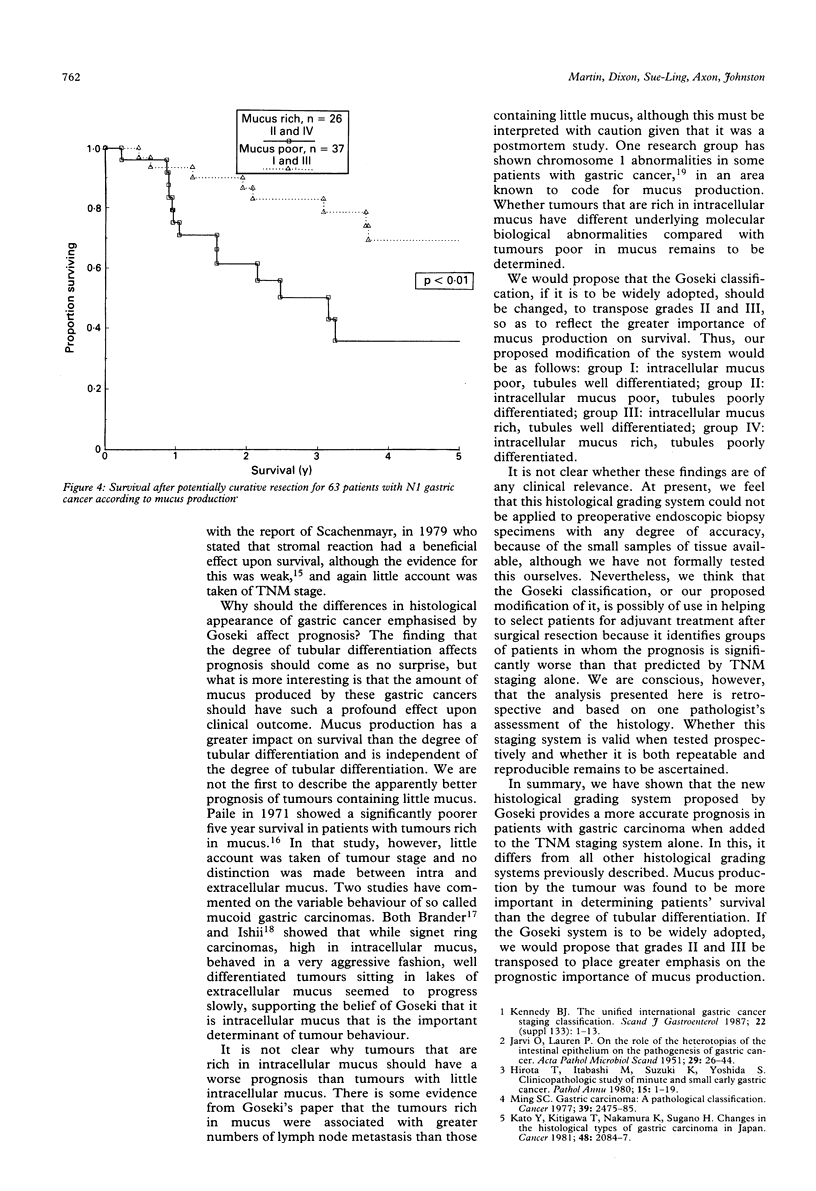
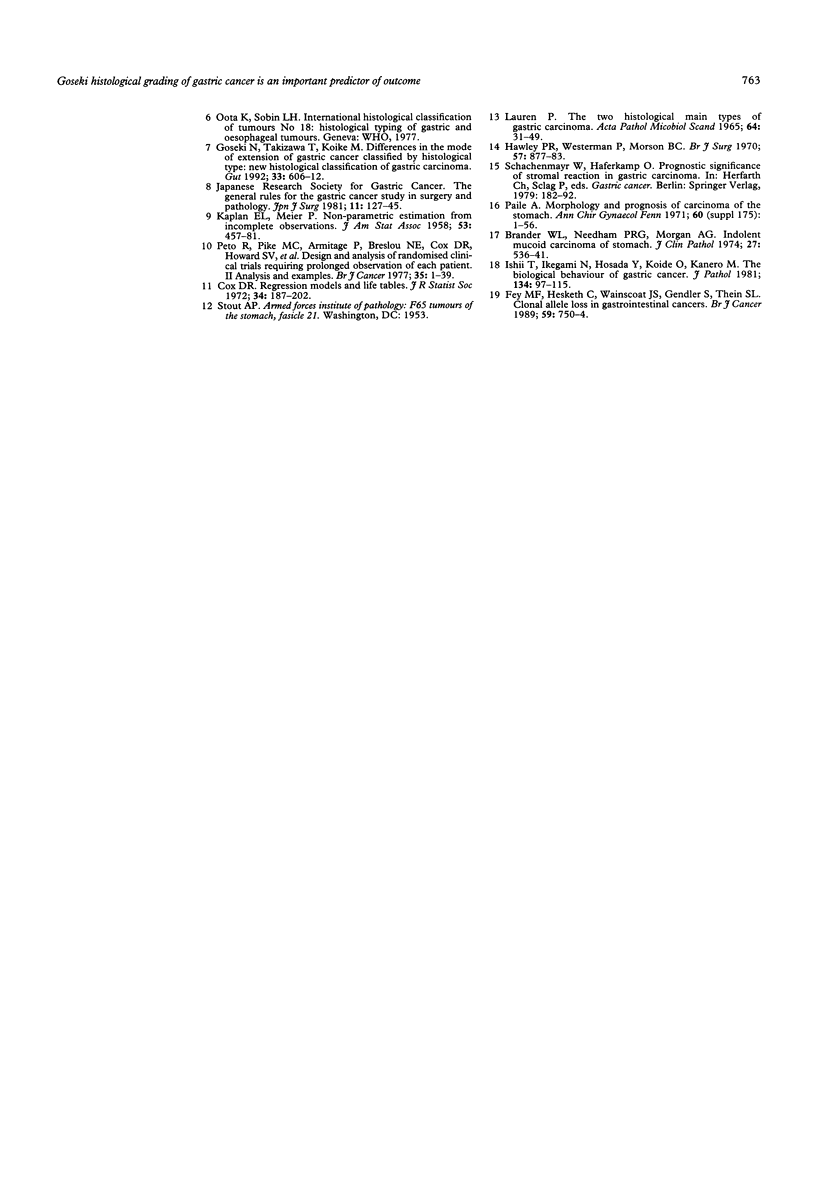
Images in this article
Selected References
These references are in PubMed. This may not be the complete list of references from this article.
- Brander W. L., Needham P. R., Morgan A. D. Indolent mucoid carcinoma of stomach. J Clin Pathol. 1974 Jul;27(7):536–541. doi: 10.1136/jcp.27.7.536. [DOI] [PMC free article] [PubMed] [Google Scholar]
- Fey M. F., Hesketh C., Wainscoat J. S., Gendler S., Thein S. L. Clonal allele loss in gastrointestinal cancers. Br J Cancer. 1989 May;59(5):750–754. doi: 10.1038/bjc.1989.157. [DOI] [PMC free article] [PubMed] [Google Scholar]
- Goseki N., Takizawa T., Koike M. Differences in the mode of the extension of gastric cancer classified by histological type: new histological classification of gastric carcinoma. Gut. 1992 May;33(5):606–612. doi: 10.1136/gut.33.5.606. [DOI] [PMC free article] [PubMed] [Google Scholar]
- Hawley P. R., Westerholm P., Morson B. C. Pathology and prognosis of carcinoma of the stomach. Br J Surg. 1970 Dec;57(12):877–883. doi: 10.1002/bjs.1800571202. [DOI] [PubMed] [Google Scholar]
- Ishii T., Ikegami N., Hosoda Y., Koide O., Kaneko M. The biological behaviour of gastric cancer. J Pathol. 1981 Jun;134(2):97–115. doi: 10.1002/path.1711340202. [DOI] [PubMed] [Google Scholar]
- Kato Y., Kitagawa T., Nakamura K., Sugano H. Changes in the histologic types of gastric carcinoma in Japan. Cancer. 1981 Nov 1;48(9):2084–2087. doi: 10.1002/1097-0142(19811101)48:9<2084::aid-cncr2820480928>3.0.co;2-8. [DOI] [PubMed] [Google Scholar]
- LAUREN P. THE TWO HISTOLOGICAL MAIN TYPES OF GASTRIC CARCINOMA: DIFFUSE AND SO-CALLED INTESTINAL-TYPE CARCINOMA. AN ATTEMPT AT A HISTO-CLINICAL CLASSIFICATION. Acta Pathol Microbiol Scand. 1965;64:31–49. doi: 10.1111/apm.1965.64.1.31. [DOI] [PubMed] [Google Scholar]
- Ming S. C. Gastric carcinoma. A pathobiological classification. Cancer. 1977 Jun;39(6):2475–2485. doi: 10.1002/1097-0142(197706)39:6<2475::aid-cncr2820390626>3.0.co;2-l. [DOI] [PubMed] [Google Scholar]
- Paile A. Morphology and prognosis of carcinoma of the stomach. Ann Chir Gynaecol Fenn Suppl. 1971;175:1–56. [PubMed] [Google Scholar]
- Peto R., Pike M. C., Armitage P., Breslow N. E., Cox D. R., Howard S. V., Mantel N., McPherson K., Peto J., Smith P. G. Design and analysis of randomized clinical trials requiring prolonged observation of each patient. II. analysis and examples. Br J Cancer. 1977 Jan;35(1):1–39. doi: 10.1038/bjc.1977.1. [DOI] [PMC free article] [PubMed] [Google Scholar]



